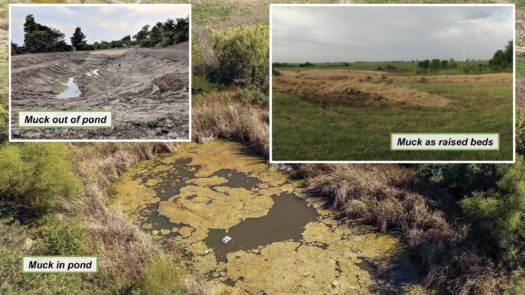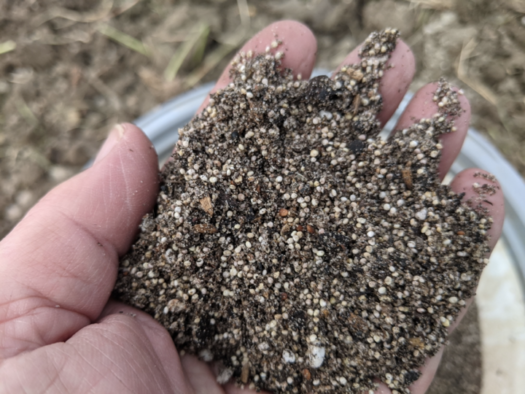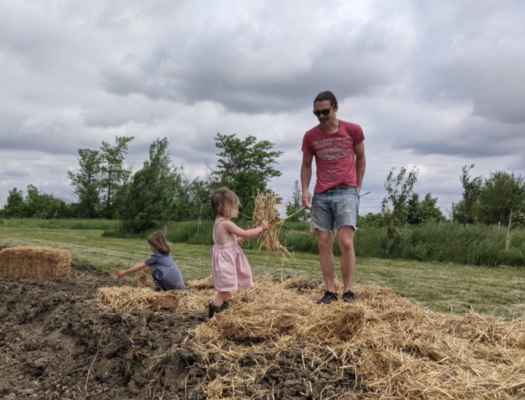Pond Muck Berm Project
- Megan Christian
Building Raised Beds on Contour
When our community pond became stagnant from silt runoff and the build-up of plant detritus over 40 years, it needed some serious rehabilitation and excavation. In 2018 we hired a contractor to help us with the job (a nearby friend and neighbor of the community) but what to do with all of the muck? Not knowing how much muck there would be we marked off two long contour lines in the field above the pond and had them dump truck-load after truck-load along side of our markers.
The goal? To build raised beds on contour.

Even though the trucks dumped the muck in rows, they actually ended up being 4′-5′ high piles that were connected. The question… how to turn these steep piles into useable/plantable beds?

After sitting for 2.5 years, the berms settled to a more workable height. They still remained too steep to plant though, and the inconsistencies in the soil quality, low percolation, and weed pressure made it difficult for intentional plantings to get established there. So how would we amend these “pond muck” berms and make use of all this nutrient rich soil?
Step one was to flatten them, and lessen the grade of the sloping sides. The idea was to spread them into about 6 foot wide beds with a walkway down the center that is wide enough to accommodate a riding mower. Either side of the walkway will eventually be planted with a combination of flowers, trees, perennials, or annual gardens.

This May (2021), a good friend of ours came to Stelle with his skidsteer for a long weekend to help tackle the berms. The skidsteer turned out to be the perfect tool for the job. It was amazing to see what a skilled operator and powerful machine could accomplish in just two days. The various attachments he used helped tear through well anchored grasses, weeds and clumps of compacted clay, ease the slope of the sides of the berms, level the surface, and even brush till the top layer of soil to prepare for seeding.


When it came to seeding, we wanted to introduce a wide variety of native plants and wildflowers. Although we weren’t sure about what the long-term plantings on these berms would be, we still wanted to broadcast seed immediately to cover the exposed soil and help keep the more aggressive volunteer plants at bay. When choosing a seed mix, we looked for a diverse native wildflower mix. We also added Dutch-white clover, a nitrogen fixer, to continue building soil fertility.

As soon as the soil was tilled, we called together a group of people to help broadcast our seed mix across the berms and then cover the seed with straw.


Since following seeding we entered a dry spell of weather, we made sure to water the berms to keep the seeds moist enough to germinate. Sure enough, we started to see clover and other sprouts soon after.

Since we have not yet decided what we are going to plant here permanently we are using them this year to grow sunflowers and pumpkins in and around the clover. All of this should help texture this muck into real soil.
Cheers!
Thanksgiving… same year.
We thought you might like to see part of the harvest. The berms totaled 100 pumpkins, various squash and gourds.



1 thought on “Pond Muck Berm Project”
Looking good Megan! Midwest Permaculture has created a beautiful oasis, must be seen to appreciate your permaculture design and results!